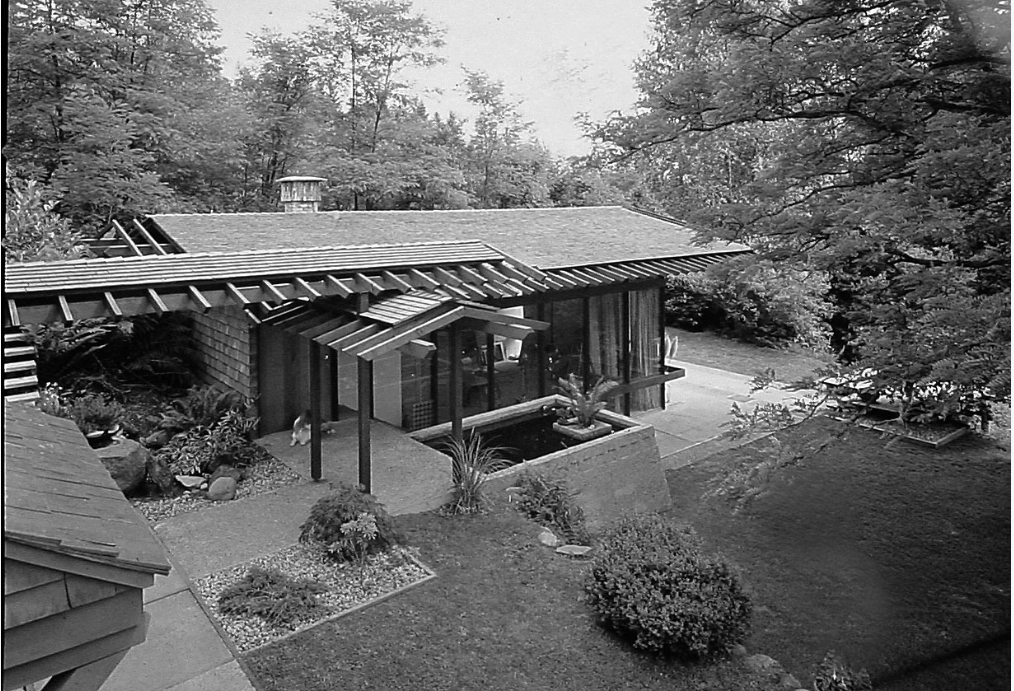 I finally got a chance to drop by the West Vancouver Museum yesterday to check out the latest exhibition on the photography of Selwyn Pullan. Assistant curator Kiriko Watanabe has done an amazing job, not only pulling out some of Selwyn’s most interesting work, but also displaying the cameras that he used to shoot them with.
I finally got a chance to drop by the West Vancouver Museum yesterday to check out the latest exhibition on the photography of Selwyn Pullan. Assistant curator Kiriko Watanabe has done an amazing job, not only pulling out some of Selwyn’s most interesting work, but also displaying the cameras that he used to shoot them with.
After serving in the Canadian Navy during the Second World War, Selwyn moved to Los Angeles to study photography at the Art Center School in Los Angeles where Ansel Adams taught. He worked as a news photographer at the Halifax Chronicle, and when he moved back to Vancouver in 1950 he found a new movement of artists and architects who were reinventing the house.
Selwyn reinvented architectural photography.

Several years ago, I asked him how he went about taking these photos. “I just look at the house and photograph it,” he said. “It’s a journalistic assignment not a photographic one.”
Many of his photos were taken in the 1950s and ‘60s. They evoke a sense of time, optimism for the future, and perhaps even a new way of thinking. He intuitively understood the work of the architects he photographed, emphasizing light and space and often pulling in the homeowners and their children to show how the architectural and interior design fit with family life.
His pictures show Gordon Smith painting in the studio designed by Arthur Erickson; there’s a young Erickson lounging in his own adapted garage; and Jack Shadbolt is photographed painting in his Burnaby studio. His stunning portraits of artists and sculptors include E.J. Hughes, George Norris, Bill Reid and Roy Kiyooka.
While the photos in the exhibition showcase Selwyn’s work, they are also carefully selected to show our missing heritage—building after building both residential and commercial that no longer exist. The loss is particularly apparent in West Coast Modern.
Go see this exhibition—it runs until July 14. There’s a guest talk by Donald Luxton on Saturday June 30 at 2:00 p.m. which will be well worth your time.
Selwyn died last September, after spending 65 years in his North Vancouver house, where he worked in his Fred Hollingsworth-designed studio, and where he parked his jaguar under a Hollingsworth-designed carport.

Top photo caption: Birks Building. Architect Somervell and Putnam. Built 1912, demolished 1974.
© All rights reserved. Unless otherwise indicated, all blog content copyright Eve Lazarus.



8 comments on “Selwyn Pullan Photography: What’s Lost”
What a loss! Though I think this style is appreciated in many areas of the world at this time. Traveling for a few years I did notice NW renditions quite often. My memory of the 50’s and 60’s, being inside like-homes in North and West Vancouver, was that they were often dark inside. Low-ish ceilings. Any comments on this?
We lived in two different mid-century houses during my childhood. The first was a classic WV post and beam with an open floor plan and large windows. Bright but with cedar panelling on the walls that got darker with age. I can’t remember the ceiling heights – and I was shorter then so it wasn’t noticeable. The second house was in the Okanagan, built with a nod to FLW, low slung, embedded in the slope with wide eaves. It had the darkest hall you could imagine when the bedroom doors were closed. Could have used a skylight.
I love the photos of those amazing homes.
I think it’s incredibly horrifying that they’ve been demolished.
Do you think most human beings enjoy destroying beauty?
It’s so very pitiful.
Thank you Eve for yet again highlighting another photographer. These photos and the obituaries for the homes are almost maddening. Thank God that these fabulous homes are preserved in photographs.
Its sad.
Only Selwyn’s own residence appears, for now, to have avoided the wrecking ball. Given his recent passing, that date with a demolition crew could be imminent.
So cool to learn of his role in developing (pun intended) a different kind of architectural photography. Even creating a new type of camera in the process.
For those Mid Century lovers Palm Springs and the Trousale Estate section of Beverly Hills are full of the best examples. In fact Trousdale has a one story height limit making it human scale. Pix of the ram earthed lots which are like stages or platforms with the landscape falling away are very striking. Oakridge still has a few though many gone.
Thanks Eve, for your amazing work. I find it very painful to see the loss of so many iconic homes and public buildings, it is almost as though Vancouver is deliberately trying to erase its own history. In 1979/80, I was a young man, and worked as a carpenter on the crew that renovated Doug Shadbolt’s home on Slocan St, and then his brother, Jack Shadbolt’s home & studio, both in Burnaby. For many decades my own family owned a fantastic heritage home on 1245 Harwood Street. The Harwood house was built by the Legg’s at the turn of the century, but was owned by the Sully & Taylor clan until my grandmother’s death in 1958. Designated a class A heritage building, but the developers still managed to whack it. More than history has been lost.
I remember 1245 Harwood Street and the battle that tried to save it. Lost to a 17-storey tower no one can afford to live in.